dtpost
Full Member
- Jan 3, 2011
- 172
- 52
- Detector(s) used
- White's MXT,BH
- Primary Interest:
- All Treasure Hunting
A couple of days ago I was working on my pressure washer and my dredge motor and pump when I noticed my pressure wash was reluctant to start. I checked all the normal avenues, to no avail. I checked the carb. to be sure it was getting fuel, I pulled the float bowl and cleaned the needle valve, the float itself and the bowl to remove any debris. I checked the fuel filter in the tank and everything was clean. 
Then I moved to the electrical system on the GX200, First I checked all the wires to be sure nothing was cracked or disconnected, I pulled the spark plug to be sure it was not foaled down from use or that it was set correctly.
Then i decided to dig deeper into the motor and what could have been a trip to the lawn service shop. Ended up being just a rusted charging wheel, so many times I have forgotten to check this first on my dredge motor. Seeing that the motor has water splashing on it from the dredge and being close to water at all times. I decided to pull the pull cord and front housing off of the motor. AHH I see why I have no spark and the engine will not start now.
I used a 120 grit sand paper and a rust dissolve to help remove rust from the flywheel and the charging magnetic plate.
View attachment 1369901
After using the rust dissolve gel I used a degreaser that had phosphates in it to help dry out the metal after cleaning the flywheel off.
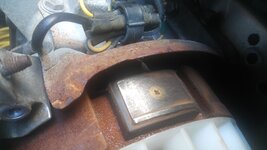
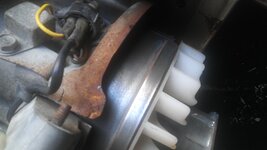
Once i had the flywheel and the magnetic plate free from rust i decided to check the Ignition unit and found that it was rusted too. I ran the 120 grit sand paper across concave shaped Ignition unit to clean rust from the surface of the sending unit. Be sure to check the wire that is connected to the ON/OFF switch and be sure to see if it is make a good connection to the corresponding wire(s).
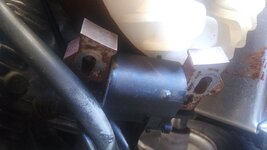
After I had remove all the rust from the ignition unit feet, I scribed the metal with a screw driver to expose new metal
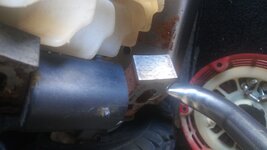
BE SURE TO PLACE THE IGNITION UNIT IN THE SAME PLACE IT WAS PRIOR TO CLEANING IT.....LEAVING THE IGNITION TOO FAR FROM THE MAGNETIC PLATE WILL NOT ALLOW FOR A PROPER CONNECTION AND RESULT IN "STILL NO SPARK TO YOUR SPARK PLUG"!!!!
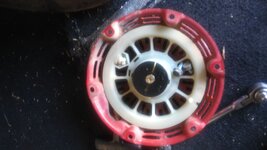
Check all parts that you removed to get to the flywheel for excessive wear and tear and replace them if needed.....

Then I moved to the electrical system on the GX200, First I checked all the wires to be sure nothing was cracked or disconnected, I pulled the spark plug to be sure it was not foaled down from use or that it was set correctly.
Then i decided to dig deeper into the motor and what could have been a trip to the lawn service shop. Ended up being just a rusted charging wheel, so many times I have forgotten to check this first on my dredge motor. Seeing that the motor has water splashing on it from the dredge and being close to water at all times. I decided to pull the pull cord and front housing off of the motor. AHH I see why I have no spark and the engine will not start now.
I used a 120 grit sand paper and a rust dissolve to help remove rust from the flywheel and the charging magnetic plate.
View attachment 1369901
After using the rust dissolve gel I used a degreaser that had phosphates in it to help dry out the metal after cleaning the flywheel off.


Once i had the flywheel and the magnetic plate free from rust i decided to check the Ignition unit and found that it was rusted too. I ran the 120 grit sand paper across concave shaped Ignition unit to clean rust from the surface of the sending unit. Be sure to check the wire that is connected to the ON/OFF switch and be sure to see if it is make a good connection to the corresponding wire(s).

After I had remove all the rust from the ignition unit feet, I scribed the metal with a screw driver to expose new metal

BE SURE TO PLACE THE IGNITION UNIT IN THE SAME PLACE IT WAS PRIOR TO CLEANING IT.....LEAVING THE IGNITION TOO FAR FROM THE MAGNETIC PLATE WILL NOT ALLOW FOR A PROPER CONNECTION AND RESULT IN "STILL NO SPARK TO YOUR SPARK PLUG"!!!!

Check all parts that you removed to get to the flywheel for excessive wear and tear and replace them if needed.....
Attachments
Last edited:




